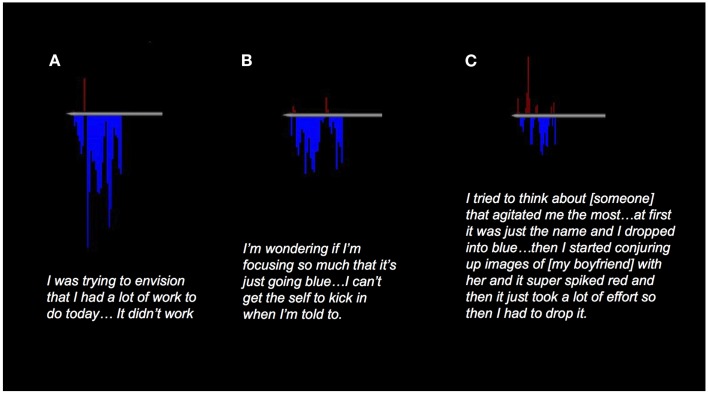Figure 1.
Examples of real-time neurofeedback from the PCC in meditators. Graphs show percent signal change in the PCC relative to an active baseline task. (A) “I was trying to envision that I had a lot of work to do today … It didn’t work.” (B) “I decided to picture wedding plans and so I started off thinking about my wedding and how I wanted to look good and then it just started to go blue. I switched to babies and I thought, ‘I want babies’ and I think that might correlate with a little red blip but then I couldn’t sustain it … I’m wondering if I’m focusing so much that it’s just going blue because I’m focusing but I can’t get, I can’t get the self to kick in when I’m told to.” (C) “I tried to think about what was the thing that agitated me most and I thought it was [a certain person] and so I started thinking about her and I, at first it was just the name and I dropped into blue and so and then I started conjuring up images of [my boyfriend] with her and it super spiked and then it just took a lot of effort so then I had to drop it. And I just kept trying to pick it up a little bit which I think correlates with the kind of like final two spikes, the kind of final two points in the red. Although, it was just so much energy, I couldn’t sustain it, which was why I couldn’t keep that really high spike going … I couldn’t sustain it and so that kind of correlates with not being able to hold on to that throughout.”

